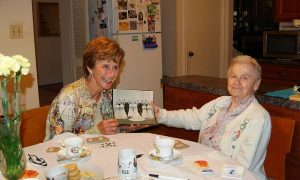Recent news and updates
Guest Blog: 5 Tips to Maintain a Nutritious Diet in Your Senior Years
Adults in their senior years should start eating healthier than usual to have an increased mental acuteness and become more resistant to illness and other diseases. As we get older it is important to stay balanced, nutritionally and emotionally. Believe it or not, eating healthy doesn’t need to be about sacrifice, and regardless of your age, you should know that healthy food can be delicious. Here are 5 amazing tips to help maintain a nutritious diet in your senior years.
1. Choose the right foods
In order to preserve their general health seniors should include a lot of fruits and vegetables into their daily diets. Whole foods contain vitamins and fiber, which are essential to a healthy digestive system. Berries, melons, bananas and apples are excellent choices. Also, you should include calcium-rich foods to have strong bones. Dairy products should be part of your daily diet.
2. Smoothies
A lot of seniors don’t feel thirsty, so they don’t drink water. Drinking water is important do avoid dehydration and constipation. If you don’t drink water, try a choice of delicious smoothies. Blend coconut water with a banana and some berries and serve for breakfast.
3. Cut back on red meats
Some people just can’t give up eating meat-based foods on a daily basis. As a senior, you should at least try plant-based protein. Apart from being less expensive than meat, they’re healthier too. Lentils, chia seeds, nuts and beans are excellent choices. They can be added to your daily salad, or included in cooked recipes.
4. Enjoy good fats but reduce sodium
Seniors should enjoy good fats because they’re excellent for their general wellbeing. Salmon, olive oil, coconut oil softgels, flaxseeds, walnuts and other fats that are monosaturated should be included into your daily diet. This way you protect your sensitive heart against harmful heart diseases.
5. Cook smart and avoid bad carbs
Vegetables should be sautéed or steamed versus fried. Instead of vegetable oil use olive oil, and thus preserve the good nutrients. Don’t boil food in order to preserve nutrients. Stay as far away as possible from bad carbs; these are commonly found in refined sugar, white flour, and white rice. These foods can cause weight gain and spikes in your blood sugar levels.









